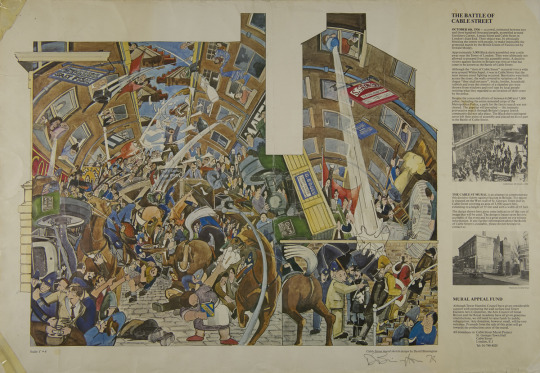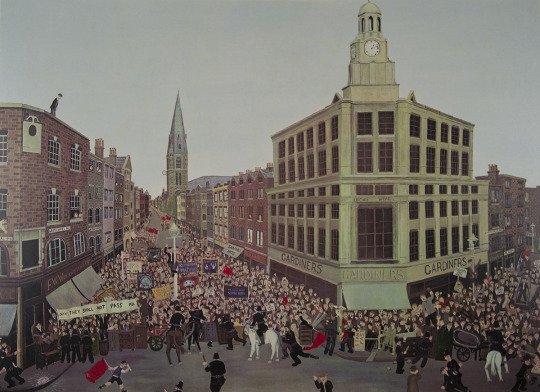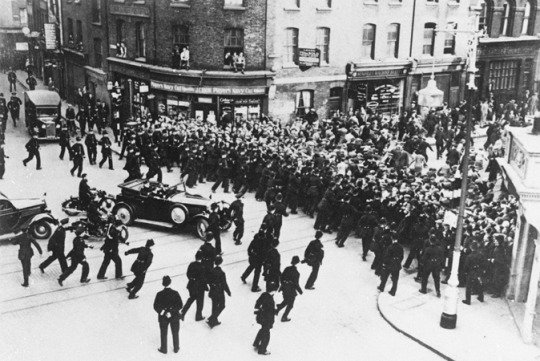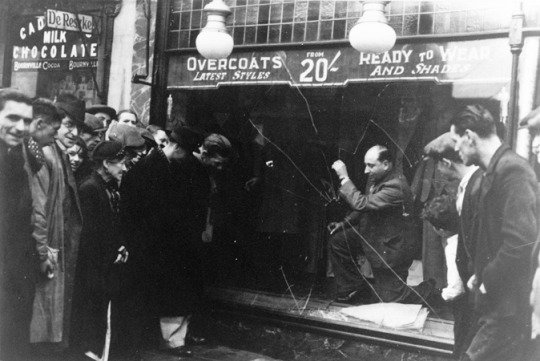The Battle of Cable Street
by Morgan Wadsworth-Boyle, Assistant Curator
On 4 October 1936, the people of the East End united to block a march by the British Union of Fascists, led by Sir Oswald Mosley.
Within the week leading to the event, local politicians had pleaded with Home Secretary Sir John Simon to forbid the march, and he had also been presented with a petition against it that had nearly 100,000 signatures. However, he refused to call it off on grounds of free speech.
In reaction, local communist, labour, trade and Jewish community groups (against the advice of the Board of Deputies) organised an antifascist protest that brought as many as 300,000 people to the streets of the East End to block the passage of 3,000 fascists. Their way was being cleared and protected by 6,000 police officers both mounted and on foot.
The fascists were turned away from the East End after the police were unable to clear a path, and what came to be known as ‘The Battle of Cable Street’ was widely regarded as a great victory against fascism in Britain.

The Battle of Cable Street mural proposal (1979), David Binnington
After several years of fundraising and preparation for the mural by the Cable Street Mural Project Committee and artist David Binnington, work finally began on the mural in 1979.
Sadly, before it was completed, it was defaced by racist graffiti with six-foot high letters in 1982 and Binnington resigned from the project. Paul Butler, Des Rochfort and Ray Walker took over, creating the mural you can see today on St George’s Town Hall on Cable Street.

Gardiners Corner (1974), John Allin
Artist John Allin, born in the East End, here represents a moment of action at Gardiners Corner, the meeting of Commercial Street and Whitechapel Road. Crowds are waving antifascist placards from the barricades. ‘They shall not pass’ is a translation of ‘No Pasarán’, the slogan used during antifascist demonstrations in Spain.

Battle of
Cable Street, with police clearing the way for a car carrying fascists (1936)
This photograph appears to have been taken at the corner where Royal Mint Street turns into Cable Street and Leman Street becomes Dock Street, with the police attempting to force back a crowd blocking Dock Street.
“there was one huge block [of people] right the way through down to Cable Street, to Aldgate, past Gardiners Corner… determined that the BUF, the British Union of Fascists under Moseley’s leadership, would not enter into the East End of London.” Jack Dash

Passers-by
looking at a broken window of a coat shop after the Battle (1936)
Whilst some shop windows were broken by thrown debris, many accounts recall people being pushed through windows due to the sheer numbers of the crowd and the relative narrowness of the streets.
“It showed that if people are united that you can stop the fascists, you can stop the racists…it was amazing because we saw Jews, Orthodox Jews with long silk coats and soft felt hats and the sidepieces standing shoulder to shoulder with Irish Catholics, dockers and Somali seamen…they all felt a there was a need to be out there to stand on that particular day.” Charlie Goodman